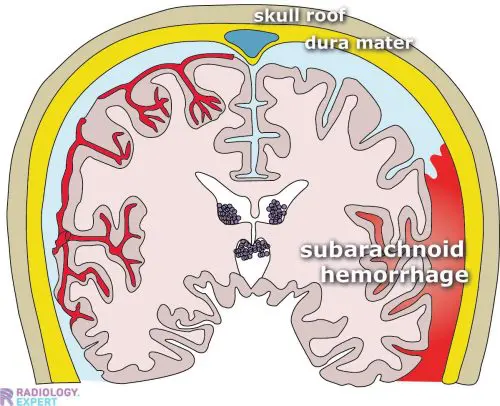What are the Causes of SAH?
SAH can occur spontaneously, or as a result of head trauma.Spontaneous SAH is often related to brain aneurysms, which are abnormalities within the brain’s arteries. The most common cause of primary SAH is a berry aneurysm. It’s called a berry aneurysm because it forms a cluster of sac-like pouches in a cerebral vessel that looks like a cluster of berries. These aneurysms swell up and weaken the walls of the arteries over time.
When an aneurysm erupts, it quickly bleeds. This condition is responsible for most SAH cases.
Other causes of SAH include:
- bleeding from an arteriovenous malformation (AVM)
- bleeding disorders
- use of blood thinners
A serious head injury, such as one that occurs in a car crash, can also lead to an SAH.
Aneurysmal hemorrhage may occur at any age, but it’s most common between ages 40 and 60
Trusted Source
Brain aneurysms are more common in women, people who smoke, and those with high blood pressure. In some cases, trauma to the brain during an injury can cause aneurysms and result in a subarachnoid hemorrhage.

